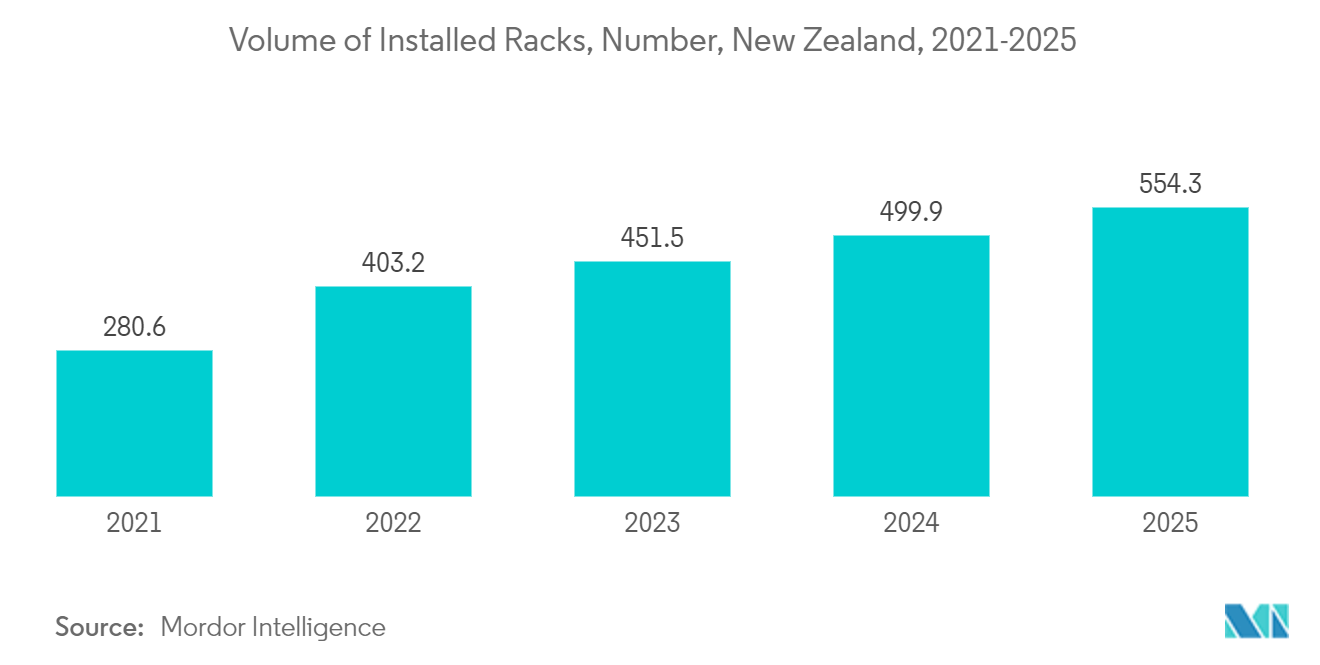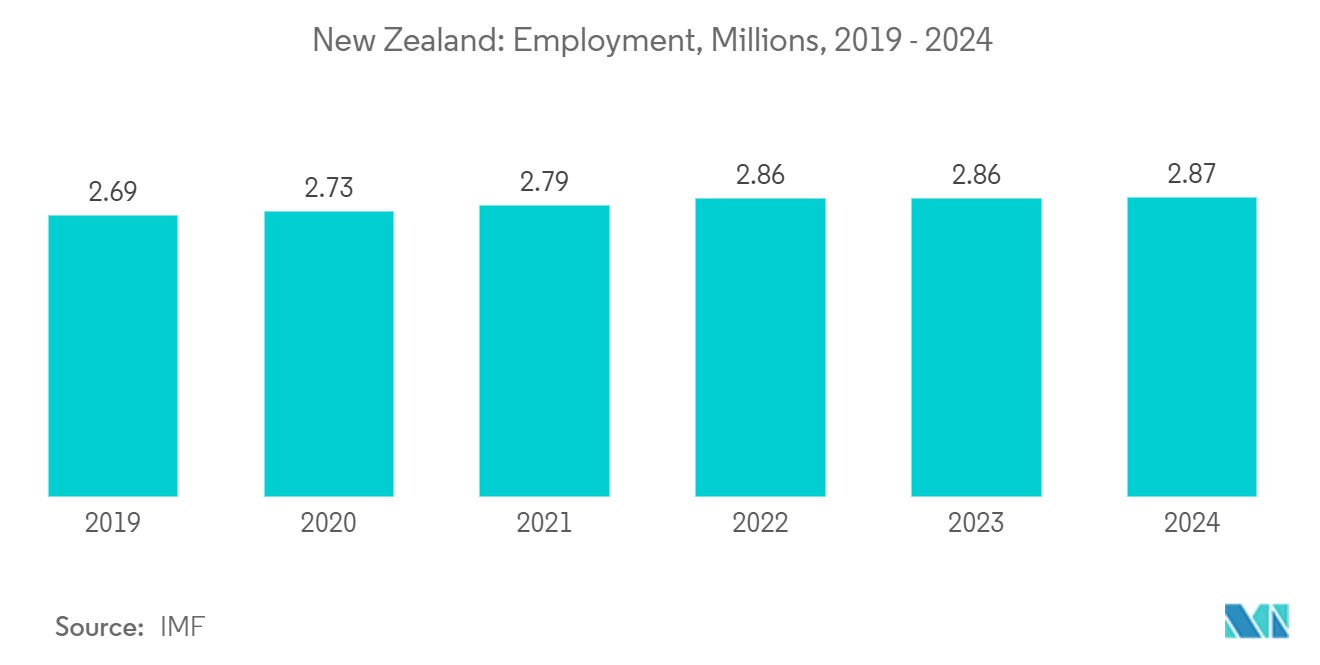Market Trends of New Zealand Data Center Cooling Industry
Liquid-based Cooling is the Fastest Growing Segment of the Market
- Technological advances have made liquid cooling easier to maintain, scalable, and affordable, reducing data center liquid consumption by more than 15% in tropical climates and 80% in greener areas. The energy used for liquid cooling can be recycled to heat buildings and water, and advanced artificial refrigerants can effectively reduce the carbon footprint of air conditioners.
- Liquid cooling takes advantage of the superior heat transfer properties of water or other liquids to support efficient and cost-effective cooling of high-density racks, up to 3,000 times more effective than using air. Long proven in mainframe and gaming applications, liquid cooling is increasingly being used to protect rack servers in data centers across the region.
- In June 2024, Aventuur, a surf park developer based in the United States, secured approval for a project in New Zealand. This innovative venture promises surfers year-round access to waves warmed by heat from a nearby data center. The Environmental Protection Agency appointed a panel that granted the necessary consent. Spanning seven hectares, a solar farm will energize the site. This includes Spark's proposed data center, set to be constructed in stages, ultimately reaching a capacity of 40 MW, as stated by the phone company. The data center's generated heat will warm the surf lagoon, enhancing its potential for year-round use.
- Direct liquid cooling solutions consistently achieve partial power usage effectiveness (PUE) values ranging from 1.02 to 1.03, surpassing even the most efficient air cooling systems by modest single-digit percentages. It is worth noting that while DLC contributes significantly to energy efficiency, PUE does not capture the entirety of its energy-saving benefits. This is because traditional servers equipped with fans draw power from the rack, and their control mechanisms are factored into the IT power consumption section of the PUE calculation, classifying them as integral components of the data center payload.

IT and Telecommunication is the Largest Segment of the Market
- ICT is key to the New Zealand government's strategy to foster innovation and local production. Collaboration between banks, the ICT industry, and the New Zealand government has created an atmosphere of community and information sharing.
- New Zealand is easing border restrictions on ICT professionals in a bid to attract the largest digital talent pool from around the world. At the forefront of these border exclusions is NZTech, a government-funded marketing organization set up to promote New Zealand technology to global markets. As the company's CEO acknowledged, the country needs tech workers as New Zealand's digital economy grows. In addition, the country is likely to see even greater demand for skilled workers in the technology industry.
- New Zealand's technology industry contributes significantly to the country's GDP, exports, and employment. Despite labor shortages and a lack of local knowledge, job growth in New Zealand's digital industry is accelerating. Total global employment increased by 10.9% to 62,718, mainly due to increased employment in the ICT industry. The increase in high-paying IT jobs in the country has significantly impacted the national economy.
- Recent economic analysis has shown that the United States plays a key role as an export market, which may indicate New Zealand's strong digital economy. This export includes both software licenses and computer services. According to the country's Minister for Trade and Export Growth, the United States is New Zealand's third largest trading partner overall and is currently the country's top destination for services exports, accounting for more than 22% of all services exports.


